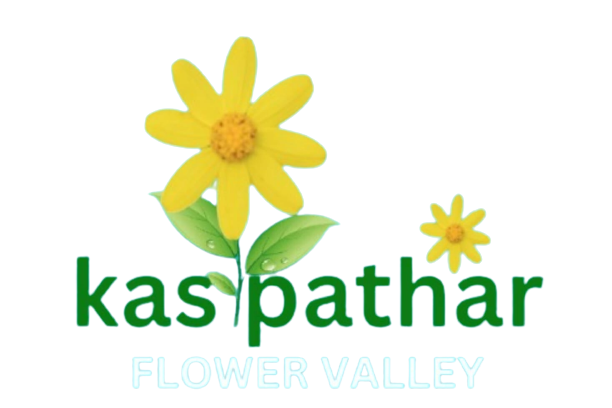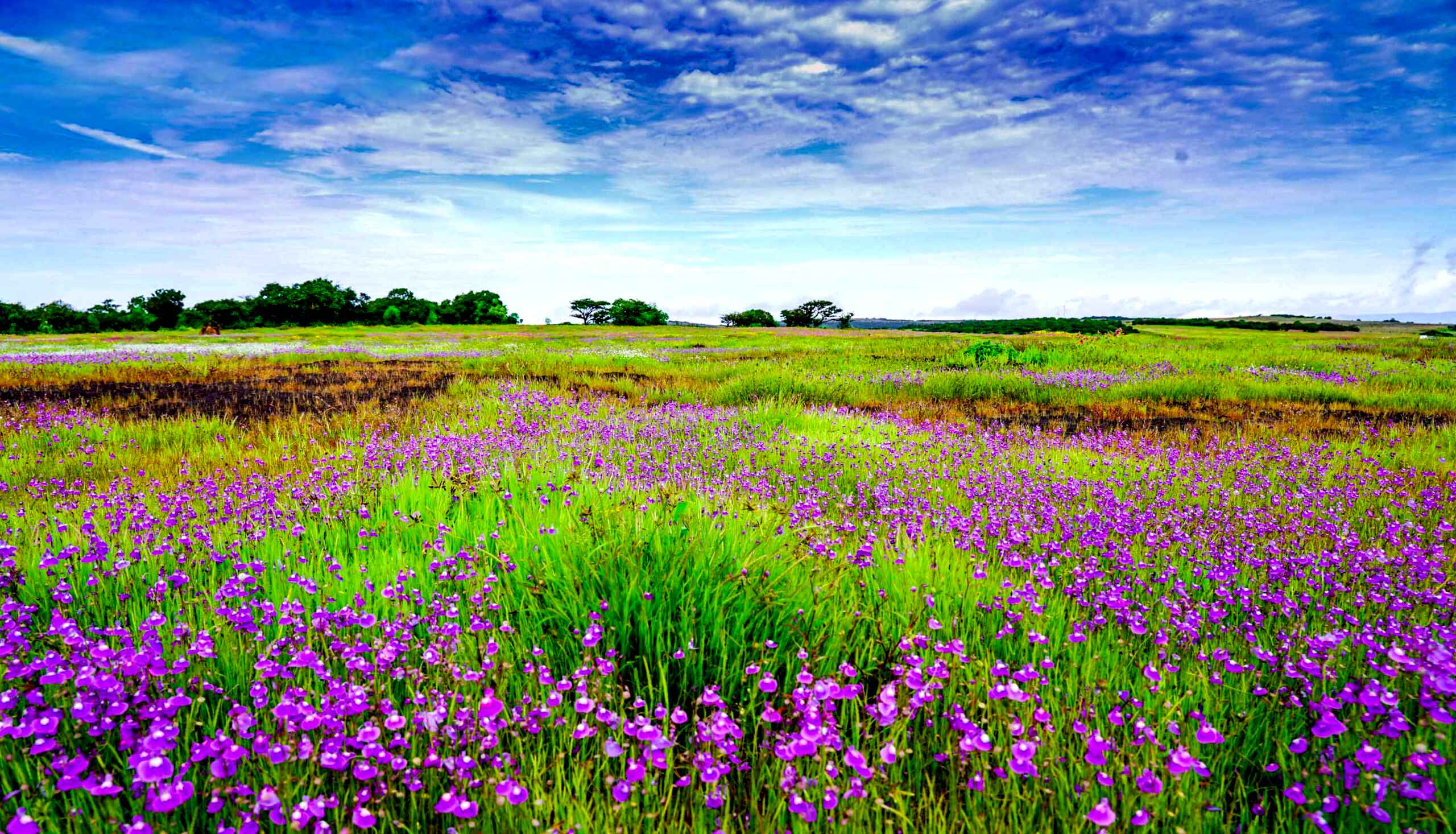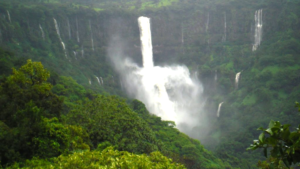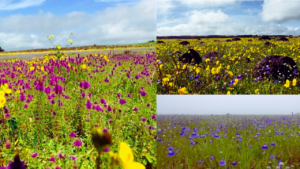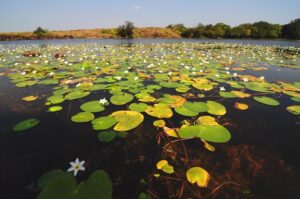Welcome to our detailed guide on Kas Pathar, a breathtaking natural wonder that enthrals visitors with its enchanting beauty. In this article, we will explore the captivating charm of Kas Pathar Flower Valley and offer valuable insights to ensure you have an unforgettable experience during your visit.
Unveiling the Hidden Gem of Kas Pathar Flower Valley
Located in the Sahyadri mountain range of Maharashtra, India, Kas Pathar is a vast stretch of lush green meadows that undergoes a stunning transformation into a vibrant tapestry of flowers during the monsoon season. Often referred to as the Kaas Plateau of Flowers, Kas Pathar perfectly captures the awe-inspiring spectacle that unfolds before you.
The plateau spans over 10 square kilometres in area and is located in the Satara district, approximately 25 kilometres from the picturesque hill station of Mahabaleshwar. World famous organization UNESCO has declared this area a World Heritage because of the rare plants and their species found here. Kaas plateau was formed by stormy conditioning and is covered by a thin soil cover as a result of which, no foliage thrives in the region.
This area falls within a region with a considerably high amount of rainfall. As a result, the plant life and wildlife found in this area are relatively distinctive. These exceptional ecological characteristics contribute to making Kaas one of the biodiversity hotspots. Kaas is home to over 850 distinct species of flowering plants, with 624 of them being listed on the IUCN Red List.
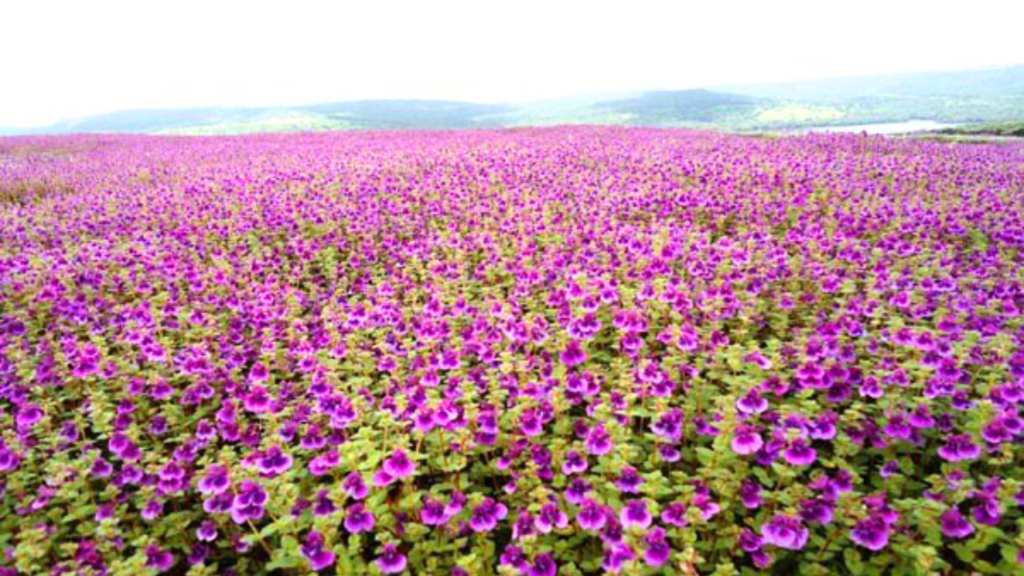
A Symphony of Colors.
Wow, the description of Kas Pathar Flower Valley during the monsoon season is truly mesmerizing! It’s amazing to imagine the vast array of wildflowers that bloom in such vibrant colours, creating a stunning landscape that stretches out as far as the eye can see. From delicate Smithia Hirsuta to striking Utricularia and elegant Impatiens, the diversity of flora is truly awe-inspiring. This natural wonder is a true delight for anyone who loves nature and photography, offering a glimpse of the sheer beauty that can be found in the world around us.
The Timeless Appeal of Nature’s Canvas
Kas Pathar is truly mesmerizing, and what makes it even more special is the way it constantly changes with each passing day. The beauty of this place lies in its ever-transforming scenery. As the monsoon season unfurls, different flowers take their turn to display their magnificence, forming a dynamic canvas that changes throughout the season. The radiant golden tones of the Crotalaria species and the majestic blossoms of the blue Dicliptera are just some examples of the many flowers that add to the ever-evolving masterpiece of nature at Kas Pathar. It’s truly a sight to behold and a testament to the stunning diversity and beauty of the natural world.
Exploring Kas Pathar: A Journey of Tranquility
The description of Kas Pathar sounds breathtaking. I can only imagine how peaceful and serene it must feel to stroll along the walking trails and immerse oneself in the sea of vibrant flowers. The gentle melodies of nature and the refreshing breeze carrying the delicate scent of blossoms must create a surreal ambience that revitalizes the spirit and brings peace to the mind. It sounds like the perfect place to escape the hustle and bustle of everyday life and reconnect with nature.

Capturing Memories: Photography Tips and Tricks
Kas Pathar is a paradise for photography enthusiasts, offering a plethora of captivating subjects to capture. To truly capture the essence of this natural wonder, we recommend visiting during the early morning hours or the enchanting golden hours of sunset. The soft, warm light during these times highlights the colours and textures, casting a magical glow on your photographs. Be sure to bring your macro lens to capture the intricate details of the flowers and a wide-angle lens to capture the vast beauty of the plateau.
Preserving the Pristine Beauty
Kas Pathar is a fragile ecosystem that deserves the utmost respect and preservation. Through the government, the Forest Management Committee Kaas Plateau maintains the plateau during the season. The plateau has many rare, endangered, and threatened, unique plant species, found nowhere in the world other than this place. If we take care of the plateau and continue to enjoy the natural beauty undisturbed, it will be available for our enjoyment for years to come as well as for our generations to come.
As visitors, it is our responsibility to ensure its beauty remains untouched for generations to come. Please refrain from plucking flowers or disturbing the flora and fauna in any way. Let us cherish this exquisite gift of nature and leave nothing but footprints behind.
Kas Pathar Kas Pathar Season 2024:
Plan Your Visit to Kas Pathar practical information
To make the most of your visit to Kas Pathar, here are some practical tips:
Best time to visit Kas Pathar Flower Valley:
The best time to witness the blooming of flowers is from mid-August to early September, during the peak of the monsoon season.
Timings:-
8 AM to 6 PM
Entry Fee:-
Entry fee: Rs.150/person. If you’ve booked online, it’s important to bring a printed entry ticket as mobile screenshots won’t be accepted (No entry Fee for children below 12 years)
Special facility for school/college students: Rs. 40/person. Letter from school/college principal mandatory; without it, the facility won’t be provided. However, this facility is not available on Saturdays and Sundays.
Bicycle Ride: Fee – Rs. 50/- per hour (for travelling from Rajmarg to Kumudini Lake).
Guided Tour: Fee – Rs. 100/- per hour (one guide for ten people)
Online booking is compulsory.
Weather: Pack appropriate clothing and footwear for the monsoon weather, including a raincoat or umbrella.
Accessibility:
To embark on your journey to Kas Pathar, you can opt for various transportation modes depending on your location. The nearest major city is Pune, which is well-connected to major Indian cities via air, rail, and road networks. From Pune, Satara will be the second stage of the journey. You can hire a private cab from Satara or take a local bus to reach Kas Pathar. Taxis or private vehicles are the recommended modes of transportation from Mumbai, Pune, and Satara.
Guided Tours:
Consider joining a guided tour to gain deeper insights into the flora, fauna, and local culture surrounding Kas Pathar.
Nearby Attractions:
While in the area, explore other nearby attractions such as Kaas Lake, Ekivwaterfall, Vajraiwaterfall, BamnoliBoatClub, Thosegharwaterfall, VasotaFort, AjinkyataraFort, Sajjangad Fort, Mahabaleshwar, Panchgani, and the Pratapgad Fort.
Experience the Captivating Beauty of Kas Pathar
Kas Pathar is a mesmerizing place that enthrals visitors with its stunning beauty. The vibrant colours of the blossoming flowers and the peaceful ambience that fills the air create an enchanting experience. Lose yourself in the tranquillity of this hidden treasure and allow its captivating allure to make a lasting impression on your heart and mind.
FAQs:-
Which is the best time to visit Kas Pathar?
The best time to visit the Kaas Pathar/Plateau is from mid-August to early October. This plateau is open for visitors from 8:00 A.M. till 6:00 P.M. Online booking is mandatory to visit this plateau.
What is the Kaas Pathar famous for?
Kaas Pathar a Valley of Flowers in Maharashtra, Kaas is well known for its massive carpets of blooms that spring at the end of the monsoon season.
What is the entry fee for Kas Pathar?
Entry fee: Rs.150/person. If you’ve booked online, it’s important to bring a printed entry ticket as mobile screenshots won’t be accepted (No entry Fee for children below 12 years)
Special facility for school/college students: Rs. 40/person.
How far is Kas Pathar from Pune?
Pune and Kaas Plateau are separated by 136 miles, and travelling over NH4 takes 2.5 to 3.5 hours.
What is the distance between Mahabaleshwar and Kaas Pathar?
25 km
During monsoon season, from early August until mid-October, the entire grassland transforms into a valley of flowers. In Maharashtra, Kaas is situated around 30 kilometres from Satara and 25 kilometres from Mahabaleshwar. Pune and Kaas Plateau are separated by 136 miles, and travelling over NH4 takes 2.5 to 3.5 hours.
What is the height of Kas Pathar?
1200-1300 meters
Which is the nearest railway station to Kas Pathar?
Satara Railway Station is the nearest railway station to Kaas Plateau.
Which Flower Hill is near Pune?
Kaas Plateau – Maharashtra’s Valley of Flowers – Places near Pune and Mumbai.
How far is Kaas Pathar from Satara?
Kaas Pathar is about 20 km from Satara.
Are there flowers in Kaas Pathar?
It is situated on high hill plateaus and grasslands turn into a ‘valley of flowers’ during monsoon season, particularly from August to early October. Flowers are sensitive to nature. Kaas Plateau has more than 150 or more types of flowers, shrubs, and grasses. The orchids bloom here for 3–4 weeks during this season.
What is the biodiversity of Kas Pathar?
over 850 flowering plants grow on the plateau, including Karvy, Orchids, Smithia Hirsute (Mickey Mouse flower), and many more. Out of them, 39 are exclusive to this region and 33 are listed as endangered by the International Union for Conservation of Nature.
What to be careful about while walking on Kaas Plateau?
While walking on the Kas plateau, do not go to the edge of the plateau. There is a possibility of rock falling in thick fog. Be careful of snake bites. Keep a distance from wild animals like Bison, and leopards on the plateau.
What is the Speciality of Kaas Plateau?
Kaas Plateau is a plateau near Satara. It is listed as a World Heritage Site (WHS) by UNESCO. The Kaas Plateau is a laterite soil table land, typical of the Western Ghats in Maharashtra. During the monsoons, the region known as Kaas Pathar transforms into a wildflower wonderland.
What animals are in Kas Pathar?
Along with the company of nature, there is also the sighting of wild animals. Sheep and rabbits are seen running in the distance. Ferocious animals like leopards, bears, Indian bison, and Sambar deer also come to the plateau. and rare birds like the Woodpecker and the Asian Fairy Bluebird can be found here.
Is Kaas Plateau World Heritage?
When the monsoons begin on the Kaas plateau, numerous types of wildflowers bloom. The plateau was included in the protected list of UNESCO World Heritage Sites in 2012 due to the many rare species found here. It is now become a tourist destination. The government has taken several steps to control the possible damage by tourists.
Which plateau is called the Valley of Flowers of Maharashtra?
Kaas Plateau
Known as the Valley of Flowers of Maharashtra, Kas Plateau is one of the most scenic spots in Satara. It is a great sightseeing spot for people living in cities like Mumbai and Pune.
How do I reach Kaas Pathar from Mumbai?
The nearest major city is Pune, which is well-connected to major Indian cities via air, rail, and road networks. From Pune, Satara will be the second stage of the journey. From Satara, you can hire a private cab or take a local bus to reach Kas Pathar. Taxis or private vehicles are the recommended modes of transportation from Mumbai, Pune, and Satara.
How many types of flowers are there in Kas Pathar?
The entire area is covered with flowers of different colours. Kas has more than 450 species of flowers and some carnivorous plants like the sun. Some flowers come only after a certain year.
Where is Kaas Plateau located?
Kas Pathar or Kas Pathar (local name) is located in the Satara district of Maharashtra. Satara is about 140 km from the main city of Pune. Kas Plateau is a beautiful bio-diversity site located on the hilltops of the Sahyadri in the Western Ghats.
Which flower is rare in Pune?
Karvi flower (Strobilanthes callosa) is a rare shrub found on the west coast of India, mainly in the low hills of the Western Ghats. In Marathi and other local dialects as well as in neighboring Karnataka, the shrub is locally known as Karvi
What are the other attractions places in the Kas area that are less than 25 km to 30 km?
Ekive Waterfalls, Bhambavli Vajrai Waterfalls, Kas Lake, Kumudani Lake, Ghatai Devi Temple, Bamnoli Boating Club, Yawateshwar Temple, Vasota Fort, Ajinkyatara Fort, Sajjangad, Thoseghar waterfalls, Mahabaleshwar, Panchgani Pratapgad fort.
What precautions should visitors take to preserve the natural beauty of Kas Pathar?
Do not act in such a way that the flowers will be trampled.
Do not throw garbage elsewhere.
Follow the rules of the Forest Management Committee.
Facebook Page:- https://www.facebook.com/kaspatharflowervalleysatara
Website Link:- https://kaspatharflowervalley.com/ekiv-waterfall/
Read this also:https://www.kas.ind.in/
